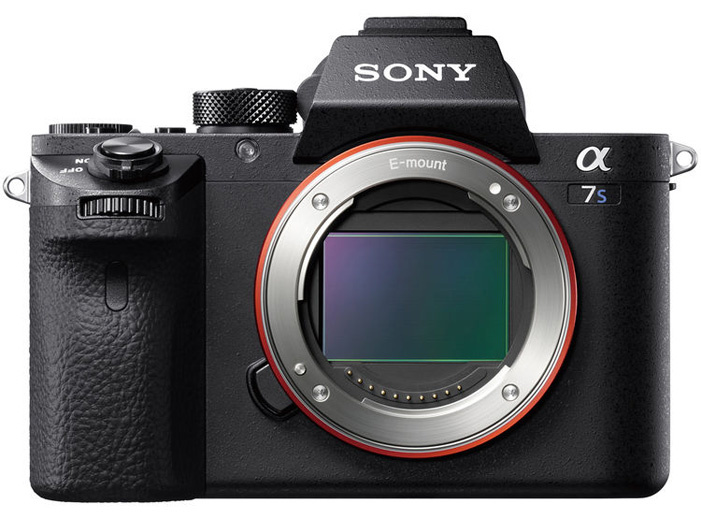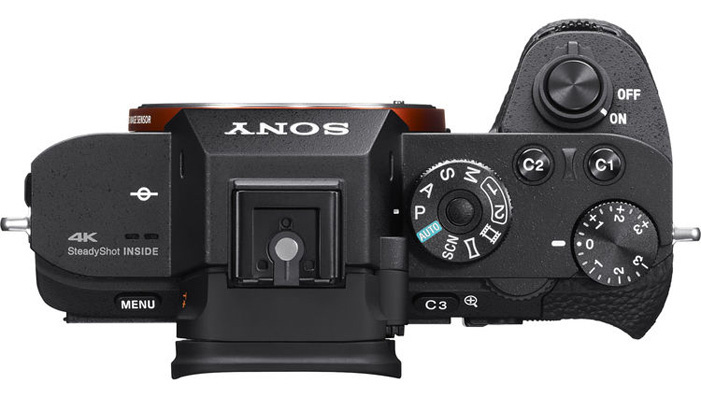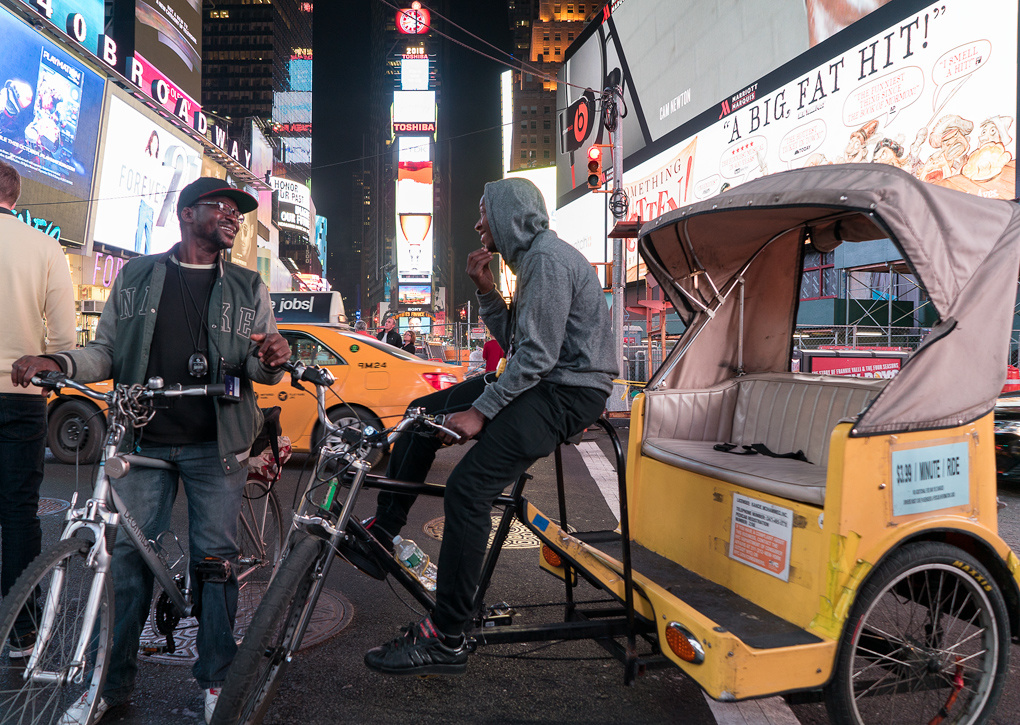The Sony a7S II is the latest full-frame mirrorless Alpha camera to be released and builds upon the head-turning low-light capabilities its predecessor was made known for. Now featuring internal 4K video recording, in-body 5-axis image stabilization, and improved autofocusing, the a7S II is once again calling attention to itself by offering a range of features currently unmatched.
Sony invited me to meet up with some members of the Digital Imaging team in New York City so that I could get some hands-on time with the newly released a7S II. Using the mirrorless camera along with the Sony FE 90mm f/2.8, FE 28mm f/2, and FE 24-70 f/4, I had the opportunity to do some shooting while in the city. What follows is an introductory overview and my first impressions of photographing with the brand new Sony a7S II.



The a7S II follows the same body design as the other Mark II a7-series cameras, which means more customizable buttons on the top and back and a beefier chassis sporting a deeper, more ergonomic grip. The larger body design gives room for the in-body 5-axis image stabilization system. We’ve seen this feature first added in the a7 II and then the a7R II, but I think particularly the a7S II really makes the most of this new inclusion. As a camera beloved by moviemakers, the 5-axis stabilization means that these customers can start getting away with using no additional bulky stabilization accessories for a very low profile, yet professional shooting experience. And with the excellent low-light capabilities, the in-body stabilization is also maximizing the full imaging potential of modern day photo technology. You can combine the great low-noise, high-ISO quality with the 5-axis stabilization to pull extremely clean shots without much regard to the lighting situation.
Since I normally shoot with my own Sony a7R and have also used the a7 II and a7R II, I’ve certainly come to have my own preference in terms of how these cameras are set up. What I’ve come to enjoy is that nearly every button on these cameras can be customized — something that I take full advantage of. Picking up the factory-reset a7S II reminded me of this, and I think Sony is doing a good job at letting their customers be the ones in control of their own devices.
Autofocusing with the a7S II has been improved to be twice as fast as the first generation according to Sony and now has 169 AF points. I had no troubles with locking in focus quickly in dim scenarios such as in a restaurant and in Sony Pictures’ screening room using both zone and single point AF modes. Using zone AF points shooting dark subjects with a brighter background, there were a few instances where the focus would go for the better-lit parts in the background. In those trickier situations however, I would expect the user to recognize it and probably change to a more accurate single point AF. The a7S II is said to maintain autofocus in conditions as dark as -4 EV, so I look forward to testing that out more as I get more playtime with the camera.
The all-new shutter mechanism in this camera is built with higher durability and performs more quietly with a 50 percent reduction in vibration. The silent shooting mode keeps pace with the camera’s five frames per second maximum shooting speed. I used its silent shooting mode for when Sony President and CEO Kaz Hirai was presenting the RX1R II and it should work swimmingly for weddings or other noise-sensitive applications.

I've bundled together a series of a7S II raw files (106.1 MB) that range from ISO 1,600-409,600 so that you can play with pushing and pulling them yourself and inspect the noise and dynamic range qualities to your heart's content.
One of the key improvements in the a7S II is the ability to now record 4K 24P/30P video internally. With the a7S, an external recorder was necessary and ultimately negated the light rig setup you gain when shooting with a mirrorless system. Unlike the a7R II’s internal 4K recording, there’s a full pixel readout without pixel binning while shooting in the full-frame format. Again, combined with in-body stabilization, your film setup may have just now shed two pieces of accessory devices if you are upgrading from the Sony a7S. The a7S II does have HDMI output for 4K and Full HD (4:2:2 8-bit) as well. There’s also the ability to record 120 frames per second in Full HD and internal recording of 5x slow motion video.
For videographers who need to maximize the data in their captures for postproduction color grading and corrections, the a7S II now supports S-Gamut3.Cine and S-Log3, which can widen the dynamic range by up to 1,300 percent. The new Gamma Display Assist function helps those shooting in S-Log to maintain a sense of the scene’s contrast by displaying them naturally on the on-camera monitor rather than the low contrast S-Log recorded version.
There’re also a few more details to keep in mind. All the Mark II a7-series cameras still only have a single SD memory card slot rather than the now popular dual slots, Sony FE lenses are still coming along and selection is semi-limited, especially in the large aperture range, and battery life remains to be a relevant topic for these advanced mirrorless systems.

The Sony a7SII now has a menu option which allows for 14-bit uncompressed raws to be recorded. Previously, all a7-series cameras used a lossy 11 plus 7 raw format.
Having dual card slots would certainly be a big winning factor for many professionals who rely on file redundancy, even if that means one SD and one micro-SD. Sony does seem to be taking a lot of time in releasing a set of lenses that can match up with the favorite offerings of Canon or Nikon, but then again, you could just buy an adapter for the Sony and wait it out. I am interested to see how battery life in the a7S II fares with the in-body stabilization and 4K recording, but I won’t be very surprised if it isn’t all that different from the mediocre longevity of the Sony a7R II. I don’t think there is an easy answer for the battery life in these mirrorless cameras. We either have to wait it out for better compact batteries to become affordable, wait it out for engineers to figure out a way to further reduce battery consumption in the device, or beef up the size of the camera yet again to fit a bigger battery. I’ll add that there is one new form of relief in this area: now, the micro-USB port on the camera can be used for charging while the device is powered on and operable.
The Sony a7S II is priced at $2,998 and available now from B&H Photo.














Dropbox, Google Drive, OneDrive and simply share a folder or zip for a limited time.
http://www.mediafire.com/ or http://mega.nz/ are quite popular with large file sharing.
*Edited to add - you might consider exporting low-res thumbs and single files in a folder, so that people can pick which one(s) they would like to play with. Especially for people with slow connections or limited band-width.
Good review and article, HOWEVER... may I respectfully ask you to consider a different locker to store your RAW files for people to play with?! You're going to cause some people some grief with that border-line malware download site 4share. Just a warning.
The file has been added to our server and the download link is updated now.
What about heat? On the A7R II i've seen people complaining that after 10-15 minutes of 4K recording the camera has to shutdown for half an hour.
Could they fix it in A7S II seeing how it's pretty much the same compact body?
This is something I will have to test for my full review and let you know.
Great article and thank you for providing those raws (this truly allows me to have hands on experience with the photos in raw) One thing I wish people would do is test for over heating,I know there was an issue with some of the Sony a7s I having over heating issues, not in the sensor, but in the processing chip. I would love someone to ginny pig their A7sII and wait till it over heats and document times and record times till it over heats.
I haven't had the chance personally to shoot the camera, But I'm going to order it real soon. From the videos I see online, I feel like everyone was talking about the ergonomics of the camera with a bigger hand grip and things, But the battery is the same? I bring this to question Sonys thoughts behind it, Did they just not want to piss off those Original A7 owners by changing batteries out? Or is there really no more room in the design for a larger battery. For me personally I don't mind having a large camera, If I can push battery life or other things like duel card slots. It's most impressive that they can fit all this into a small body, but this sale is geared to professionals, not the average consumer who needs smaller.
I do ask myself questions, like if this is the exact same sensor as the old generation camera, Will sony update the firmware to help out older generations become a bit more powerful? I do understand limitations of chips and power distribution on boards so this might be the case of why they can't update their older cameras.
P.S. I think they should stop doing low light test in new york all together... Its daylight there all the time with those city lights. I want a true test, Come to MN to test out a sensor in low light, we can all enjoy a nice black sky ;-)
Funny enough, I WILL be testing out the a7SII in Minnesota. I live in Wisconsin and am headed that way soon with the camera. I was only shooting with it in NYC for one night.
As for the battery life, I think it makes sense to have all Mark II cameras operate with the same battery, but who knows what will happen with the Mark III.
I'd like to know how is the dynamic range compared with the A7RII, I've been looking for a review but nothing found. Does anyone know where I could read something about it? Ryan, if you have done any test I'd really appreciate your opinion. Thanks.
Anyone having issues with a lot of noise/grainy video? Im starting to believe there was a bad batch of a7sii's made. Photos look beautiful, video not so much...
Ive seen such beautiful images online from this camera, but I can't seem to get rid of high noise at any setting or picture profile. I'm about to send mine back for a replacement.
Noise is heavy in all picture profiles, not just s-log3. Anyone have similar experiences or any ideas I may be missing?
I'm am transferring the files (for the 1st time) off our new Sony a7sii to my Mac, and the transfer keeps crashing- with my finder showing error code -36. I finally realize the Macs do not like the Sony .THM Unix Ex Files. I transfer only the Movie-MPEG4 files and the transfer works fine. Does anyone know if there's a reason Sony has the 5-7k Unix files there? Are they important? (Hopefully not.)
By the way, the movies look beautiful! Really amazing!